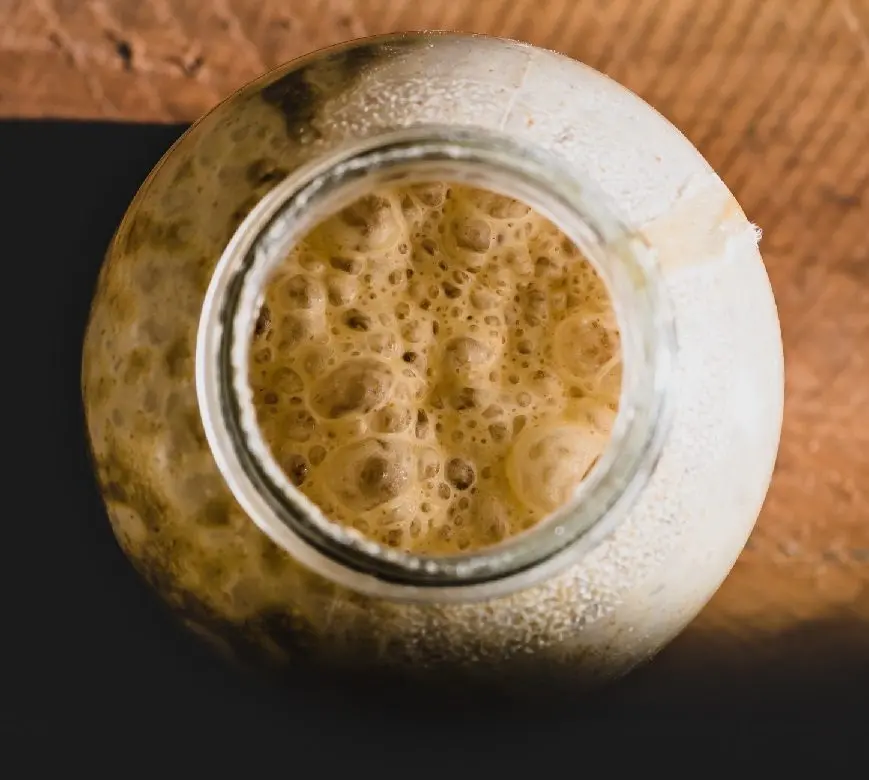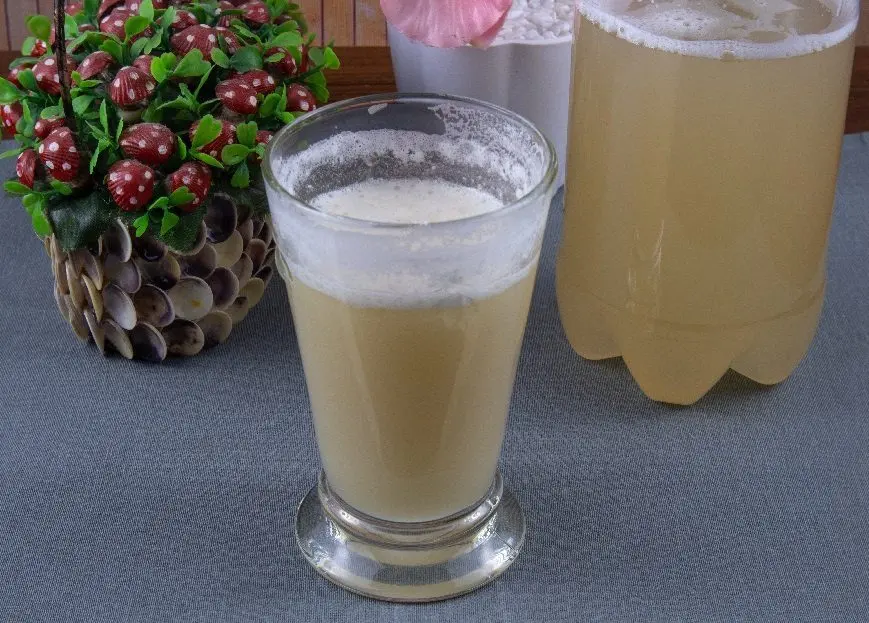Contents
A natural soft drink with a simple preparation technology and an easily accessible composition. I will tell you how to make rye kvass from sourdough flour according to the classic recipe. To taste, the homemade version (also called “village”) is much better than most store-bought counterparts, which are not a product of live fermentation, but are “brewed” from chemical additives and dyes.
Ingredients for 3 liters of kvass:
- rye flour – 430 grams;
- water – 2,8 liters;
- sugar – 175 gram;
- unwashed raisins – 5-8 berries (optional);
- yeast – 5 grams dry or 25 grams pressed (optional).
The proportions are given taking into account the preparation of sourdough (thickness), which is done only once. The exact amount of ingredients is indicated at each step of the recipe.
Sugar can be replaced with liquid honey, but then kvass will have a slight honey flavor, which not everyone likes. Raisin skins harbor wild wine yeast that will ferment the must if all other strains die (rare, but it does happen).
Recipe for kvass from rye flour
1. Preparation of sourdough (thicks)
Mandatory preliminary step for the first portion of rye kvass without yeast. Ground flour contains wild yeast, which, unlike dry and pressed ones, does not give an unpleasant odor. Subsequently, the starter made can be used repeatedly, stored in the refrigerator.
In 200 grams of rye flour, add 1 tablespoon of sugar (without a slide). Slowly pouring in hot water and stirring, bring the thick to the consistency of thick sour cream (there should be no lumps). For safety net, you can throw in 5-8 berries of unwashed raisins.
Pour the mixture into a liter or larger jar to leave room for foam. Tie a jar to protect against insects with gauze, leave for 2-3 days in a dark place at room temperature. After a day, pull out the raisins. With an increase in the volume of the sourdough, the appearance of foam, hissing and a slight sour smell, the grounds for kvass are ready.

2. Preparation and fermentation of kvass wort
First you need to update the sourdough from the previous batch. To do this, get 200-250 ml thick from the refrigerator, add 1 tablespoon of rye flour and 2 tablespoons of sugar. Stir until smooth, leave in a warm place.
Boil 2,5 liters of water. Pour 200 grams of rye flour and 100 grams of sugar into a fermentation container. Add a little boiling water, by stirring, dilute the mixture to the state of liquid sour cream. Then pour in half of the water, mix again, pour out all the remaining water, chop again.
Cover the container with a lid, wrap in a towel, leave for 4-5 hours. After cooling down to 25-30°C (not higher, otherwise the yeast will die), add thickening to the kvass wort, mix and cover with a lid (not tightly). Leave rye kvass to ferment for 6-7 hours in a dark room at room temperature. Bubbles, foam and hiss should appear.
Instead of sourdough, dry or pressed baker’s yeast can be added to the cooled wort, but the drink will have a specific smell and a slight yeasty taste.
3. Carbonation and aging
Strain the finished kvass through 3-4 layers of gauze. Pour into bottles or jars, leaving at least 3-5 cm of free space to the neck. Seal tightly with lids or stoppers.
Transfer the drink to the refrigerator or cellar, leave for at least 2 hours to mature and saturate with gas. Periodically monitor the pressure in the bottles, if necessary, vent excess gas so that the containers do not burst.

The shelf life of homemade kvass from rye flour when stored in the cold is up to 7 days. It is better to drink an open bottle a day before.
Place the thick filtered in gauze in a separate jar, cover with a lid and transfer to the refrigerator. Use to prepare the following portions of the drink, starting from the second stage.
The shelf life of thick rye kvass is up to 20 days, but it is better to use it as early as possible, while the yeast is active.









